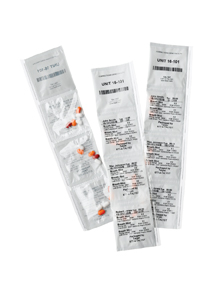New Look At Meds Distribution
One Provider’s Experience
Noreen Lee, RN-BC, NHA
Like other skilled nursing facilities across the United States, the Crawford County Care Center, Saegertown, Pa., takes life quality and resident safety very seriously. Medication administration has an enormous impact on residents’ health and happiness, and that is why the center, in conjunction with its pharmacy partner, decided to change the way they administered medications.
Crawford’s traditional model, which is the current industry standard, required that much of the nurses’ attention be spent on the medication dispensing process.
It is a time-intensive process of preparing and distributing the right medications, in the right doses, to the right residents at the right time.
However, since medication preparation and distribution can take up to five hours, many of the center’s nurses wished they could spend less time on this task and more time with their residents.
An Evolving Process
The time that nurses spent counting and organizing medications wasn’t the only downside to the center’s former medication distribution model. The nature of the center’s business means that residents are in flux—prescriptions change or they transfer to different facilities.
In addition, given that many residents arrive at the center during their last life stage, the older medication distribution model created a significant amount of medication waste given that each prescription was delivered in a 30-day dose.
Any time a resident no longer requires a particular medication, it becomes waste. While no one likes producing waste, it can be harmful to the environment and costly. It was par for the course—an unfortunate residual effect of the model.
Now, however, health information technology (HIT) developments have given new medication distribution options to long term care and post-acute care pharmacies and their partners.
Crawford’s pharmacy, Vantage Care Apothecary, had been searching for a better approach to serving its residents. The pharmacy adopted a remote-dispensing model, which makes medication passes quicker and safer, while nurses get to put their energy into what they like best—residents.
Advantages To Change
Residents were impressed with the new system—most had never witnessed anything like it in their lifetime and were intrigued about the ways in which it worked and would benefit them and their caregivers. The machine that makes remote dispensing possible is a medication-dispensing unit, about the size of a large refrigerator or large copy machine, which is housed at the facility in a secure location.
The pharmacy owns and manages the inventory in the systems and remotely monitors the dispensing of medications. The unit allows for 24-hours-a-day, seven-days-a-week access to medications by nurses. Its down-to-the-dose accountability for every single pill is a unique feature of the unit. Because the process is automated, the machine also virtually eliminates medication waste—nothing is distributed unless it is needed directly before a medication pass.
How It Works
Medications, including controlled substances, are delivered in bulk by the pharmacies and packaged in canisters that are placed inside of the unit. The machine and its inventory are then monitored remotely by the pharmacy. When medications are needed by residents, the technology automatically dispenses labeled, patient-specific, multi-dose packets immediately prior to administration.

For Crawford, on-demand medication dispensing means stat orders are dispensed in real time straight from the machine, and any residents who arrive after hours or require first doses will have prescriptions approved off-site by pharmacists and dispensed on location.
This functionality has dramatically reduced the time frame it takes for residents to receive their medication.
The system guarantees that medications are available to nursing staff around the clock—and they are automatically tracked, dispensed, and accounted for.
This means that nurses no longer need to spend time at the beginning or end of their shifts doing narcotic counts. Nor do they need to spend valuable time on cumbersome pill counting.
While medication distribution is part of every nurse’s job, it doesn’t have to define it. Crawford has found a balance for its residents through the implementation of innovations like remote dispensing.
Noreen Lee, RN-BC, NHA, is administrator at Crawford County Care Center, Saegertown, Pa.